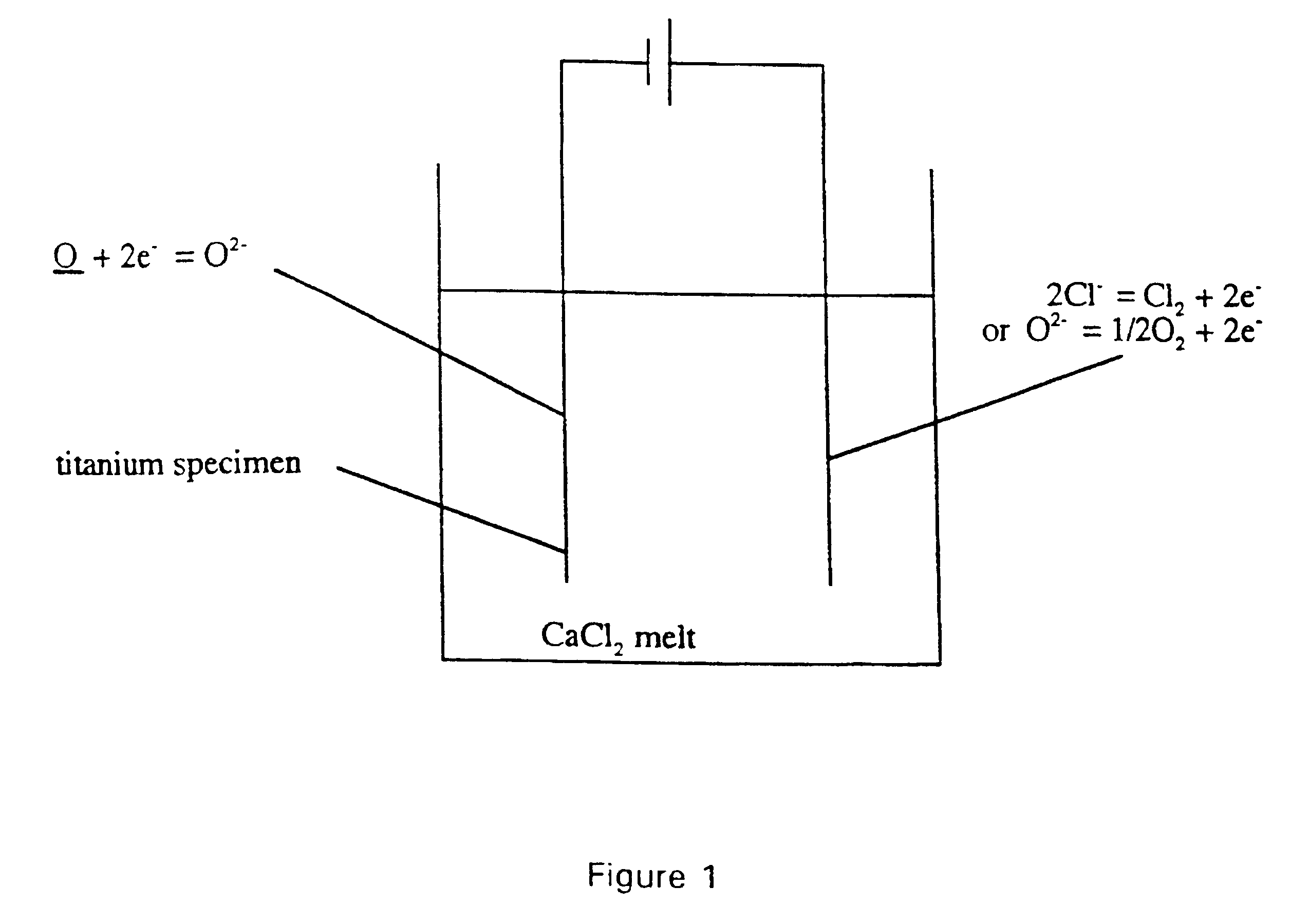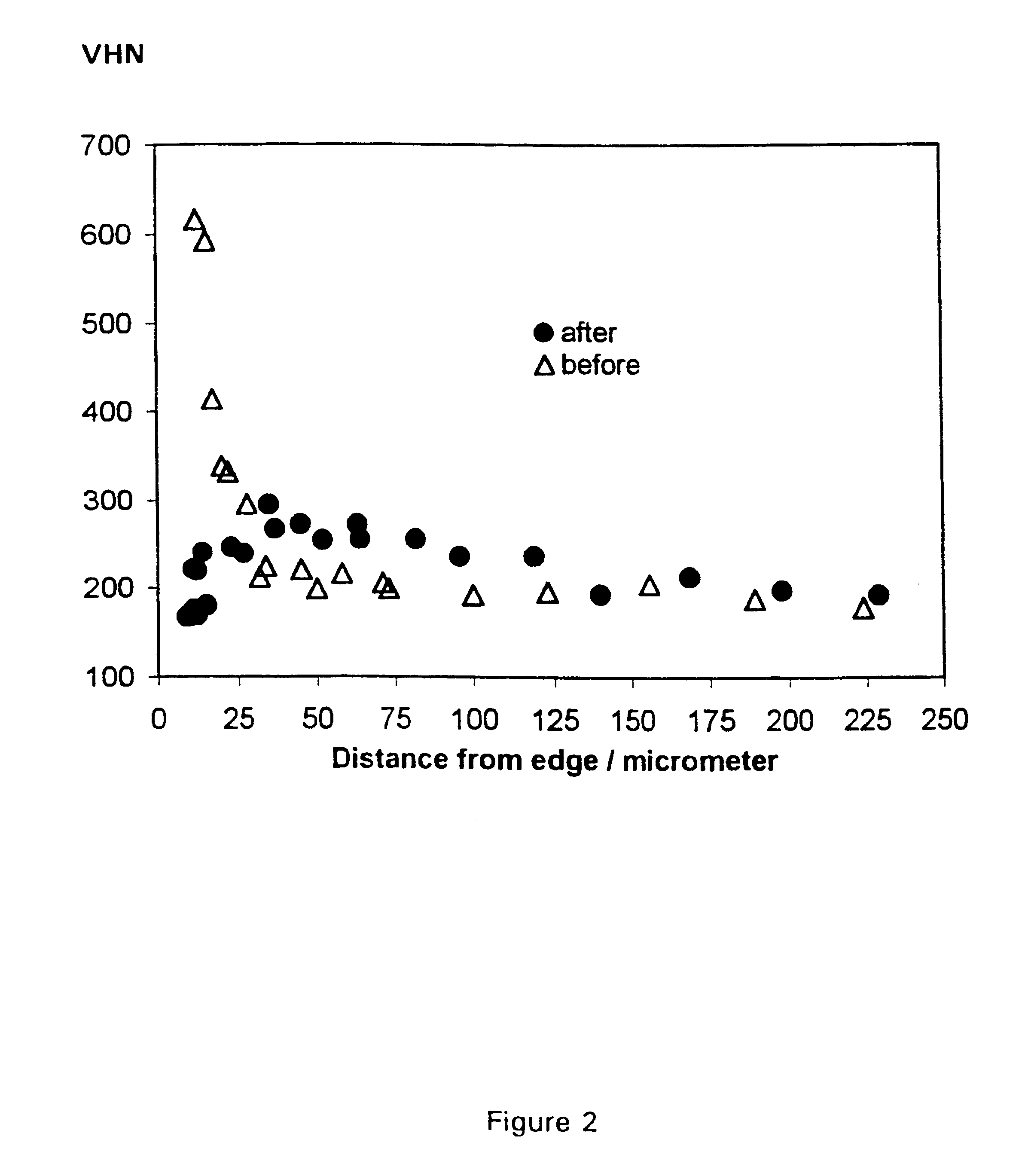Removal of substances from metal and semi-metal compounds
a technology of semi-metal compounds and substances, applied in the direction of solid-state diffusion coatings, crystal growth processes, electrochemical machining apparatuses, etc., can solve the problems of high reactivity, serious loss of ductility, and harmful oxygen, so as to reduce or remove oxygen
- Summary
- Abstract
- Description
- Claims
- Application Information
AI Technical Summary
Benefits of technology
Problems solved by technology
Method used
Image
Examples
example 1
A white TiO.sub.2 pellet, 5 mm in diameter and 1 mm in thickness, was placed in a titanium crucible filled with molten calcium chloride at 950.degree. C. A potential of 3V was applied between a graphite anode and the titanium crucible. After 5 h, the salt was allowed to solidify and then dissolved in water to reveal a black / metallic pellet. Analysis of the pellet showed that it was 99.8% titanium.
example 2
A strip of titanium foil was heavily oxidised in air to give a thick coating of oxide (c.50 mm). The foil was placed in molten calcium chloride at 950.degree. C. and a potential of 1.75V applied for 1.5 h. On removing the titanium foil from the melt, the oxide layer had been completely reduced to metal.
examples 3-5
relate to removal of dissolved oxygen contained within a metal.
PUM
| Property | Measurement | Unit |
|---|---|---|
| temperature | aaaaa | aaaaa |
| diameter | aaaaa | aaaaa |
| diameter | aaaaa | aaaaa |
Abstract
Description
Claims
Application Information
 Login to View More
Login to View More - R&D
- Intellectual Property
- Life Sciences
- Materials
- Tech Scout
- Unparalleled Data Quality
- Higher Quality Content
- 60% Fewer Hallucinations
Browse by: Latest US Patents, China's latest patents, Technical Efficacy Thesaurus, Application Domain, Technology Topic, Popular Technical Reports.
© 2025 PatSnap. All rights reserved.Legal|Privacy policy|Modern Slavery Act Transparency Statement|Sitemap|About US| Contact US: help@patsnap.com



